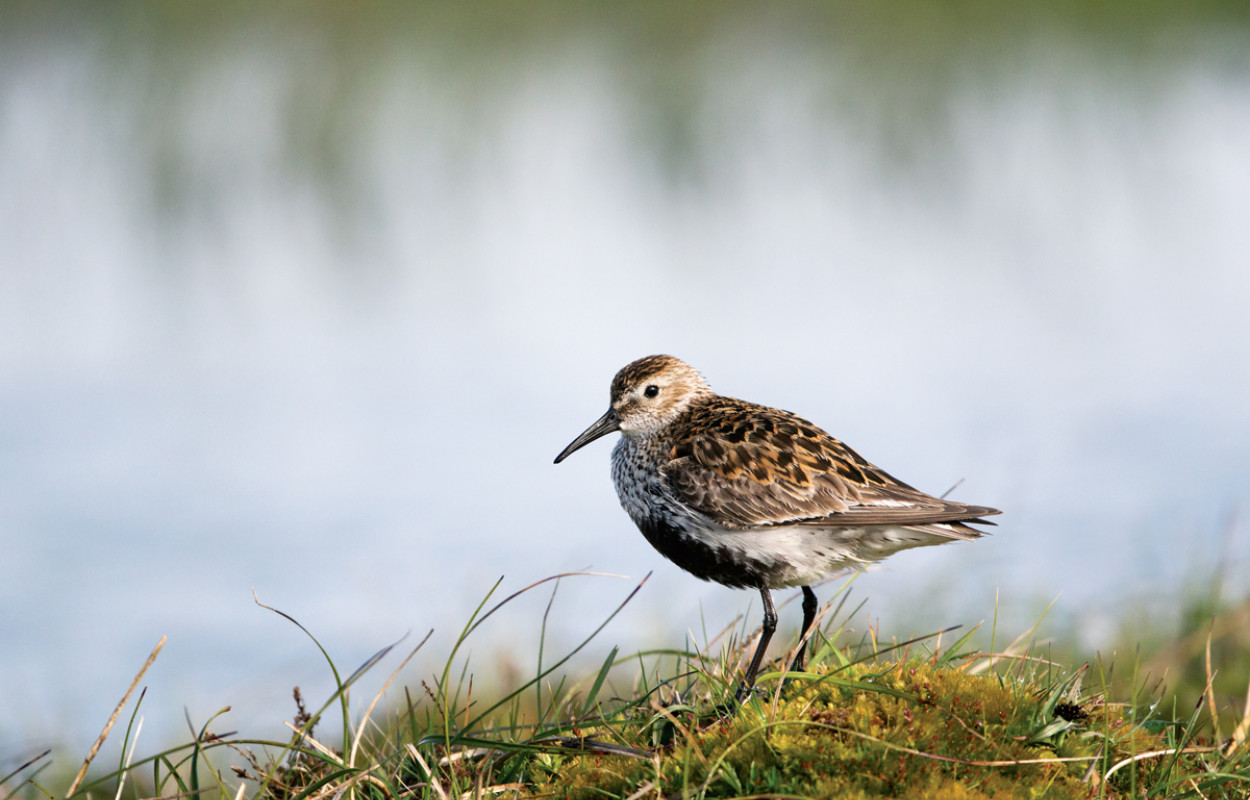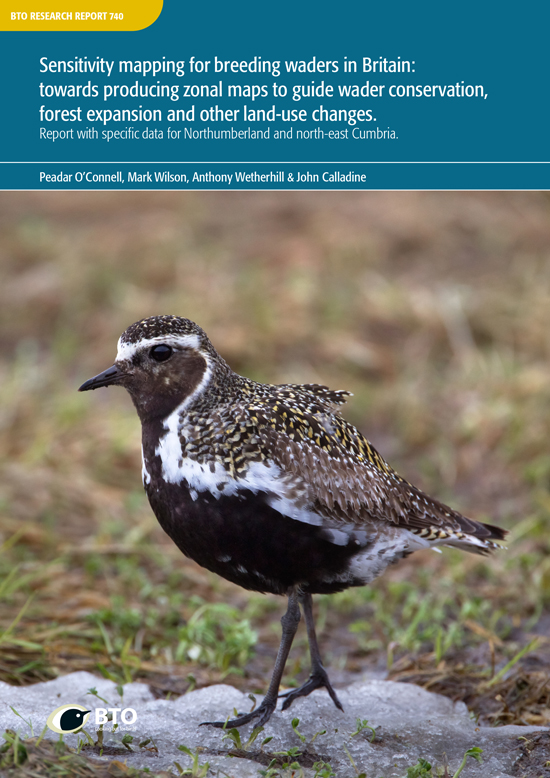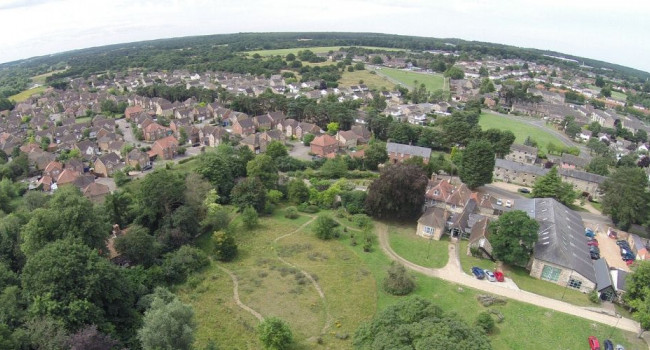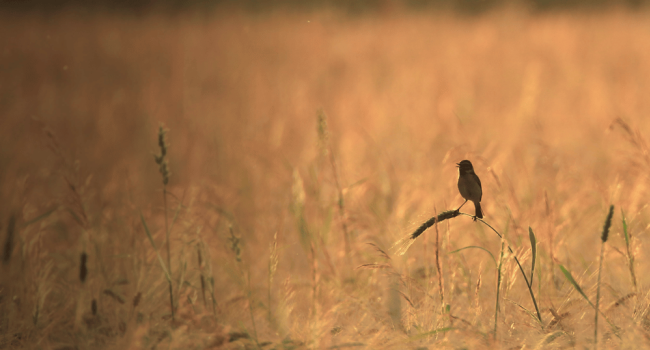Sensitivity mapping for breeding waders in Britain: towards producing zonal maps to guide wader conservation, forest expansion and other land-use changes. Report with specific data for Northumberland and north-east Cumbria

Author(s): O’Connell, P., Wilson, M., Wetherhill, A. & Calladine, J.
Published: December 2021 Issue No.: 740
Publisher: British Trust for Ornithology Pages: 80pp
Journal: British Trust for Ornithology Research Report Volume: 740
ISBN: 978-1-912642-31-1
Download article 1.67 MB application/pdf
Abstract
Breeding waders in Britain are high profile species of conservation concern because of their declining populations and the international significance of some of their populations. Forest expansion is one of the most important, ongoing and large-scale changes in land use that can provide conservation and wider environmental benefits, but also adversely affect populations of breeding waders. We describe models to be used towards the development of tools to guide, inform and minimise conflict between wader conservation and forest expansion. Extensive data on breeding wader occurrence is typically available at spatial scales that are too coarse to best inform wader conservation and forestry stakeholders. Using statistical models (random forest regression trees) we model the predicted relative abundances of 10 species of breeding wader across Britain at 1-km square resolution. Bird data are taken from Bird Atlas 2007–11, which was a joint project between BTO, BirdWatch Ireland and the Scottish Ornithologists’ Club, and modelled with a range of environmental data sets.
Overall, the predictive models performed well, as assessed by correlation with empirical data within the Bird Atlas data set and other independent data sets at both national (Britain) and regional (Northumberland and NE Cumbria) levels. Principal amongst which were the BTO/JNCC/RSPB Breeding Bird Survey (BBS) and bespoke surveys undertaken in 2021. The BBS involved using data collected for a wider annual monitoring programme (not just breeding waders) across the whole of Britain, while the bespoke surveys were undertaken within two areas of specific interest a) Northumberland and the NE Cumbria Forest Investment Zone FIZ (reported here) and b) the Cairngorms National Park (reported elsewhere). The predictive models were most successful for Curlew and Oystercatcher and least successful for Ringed Plover and Greenshank. Limitations to modelling were associated with species that have a restricted distribution and/or occupy restricted habitats. In considering lowland or enclosed farmland, the model predictions for Curlew and Oystercatcher, potentially supplemented with those for Lapwing and Redshank, are likely to best represent the relative importance of areas for breeding waders. For more upland and unenclosed areas the predictions for Curlew and Golden Plover potentially provide the most reliable information.
The most practical interpretation of the model outputs will be to categorise the predicted relative abundances for each species in each 1-km square into discrete strata, producing a ‘heat map’ of relative importance for each species at 1-km resolution. Five strata are presented with the aim of informing decisions on thresholds, to identify a final three strata that will guide actions for wader conservation and inform the levels of scrutiny required for new forest planting or other developments. In addition to guiding wader conservation, forest planning and other proposals, the model outputs can be used to assess the relative importance of particular landscapes, land uses and areas with statutory designations for breeding waders. These can be used to inform high-level policy decisions affecting breeding waders. The outputs presented here are model outputs for the whole of Britain with bespoke ground- truthing specific to Northumberland and north-east Cumbria (that for the Cairngorms NP is reported separately). These are presented and discussed to facilitate discussions on how the outputs should be best made available in the public domain to facilitate the objectives of guiding, informing and minimising conflict between wader conservation and forest expansion.









Share this page